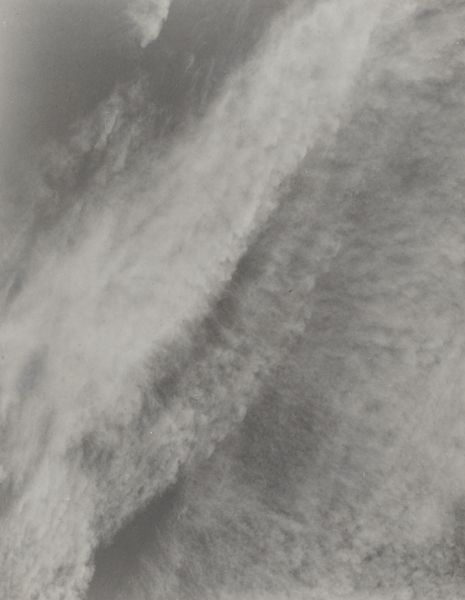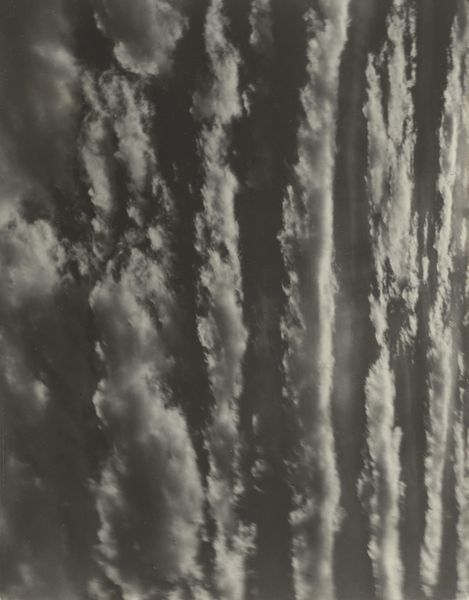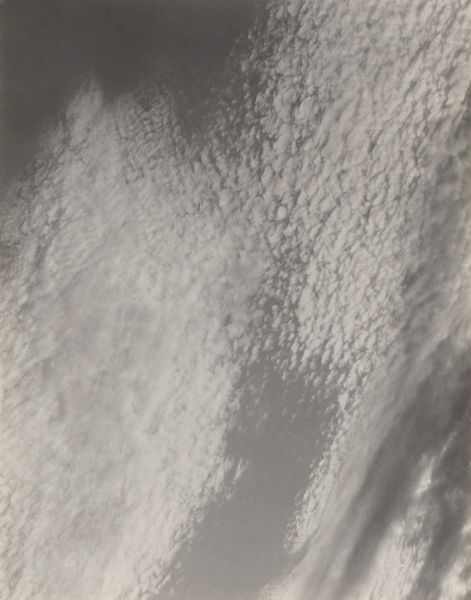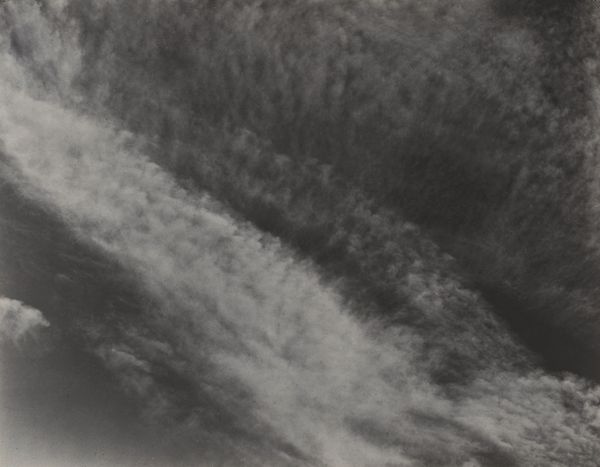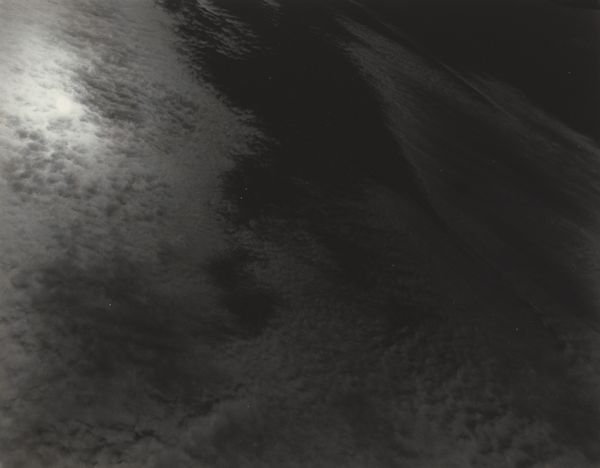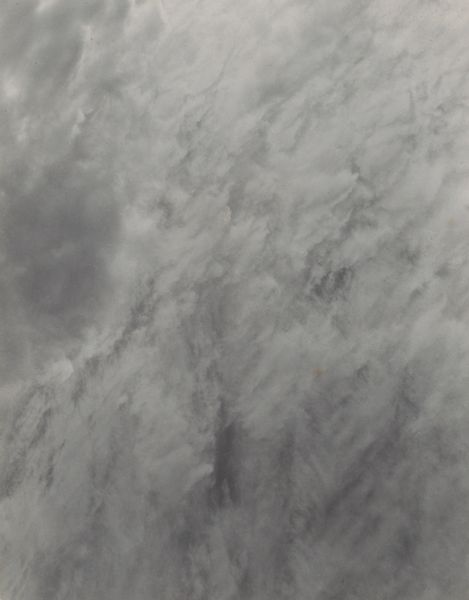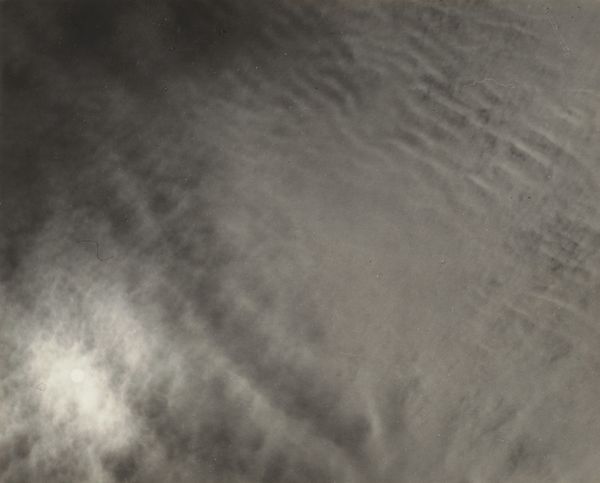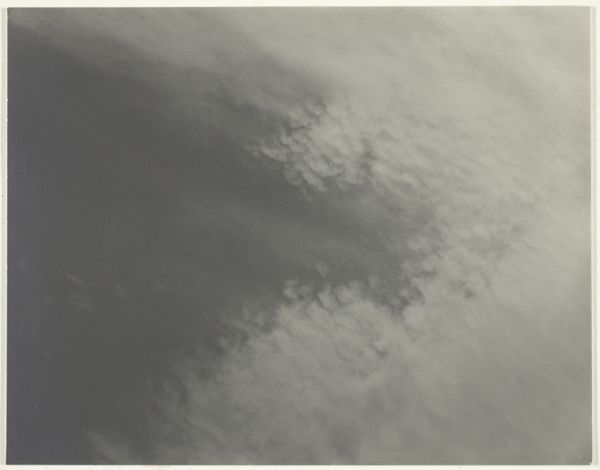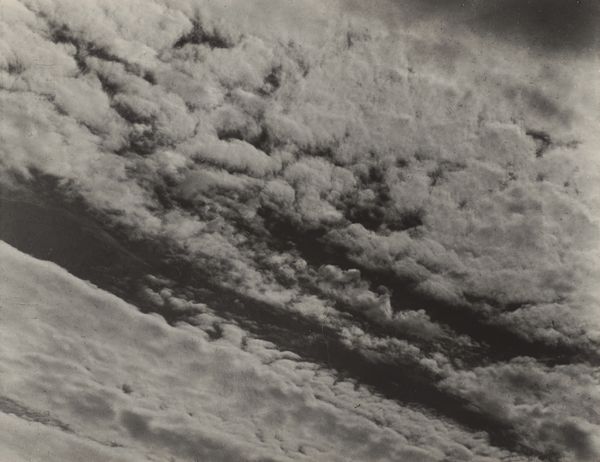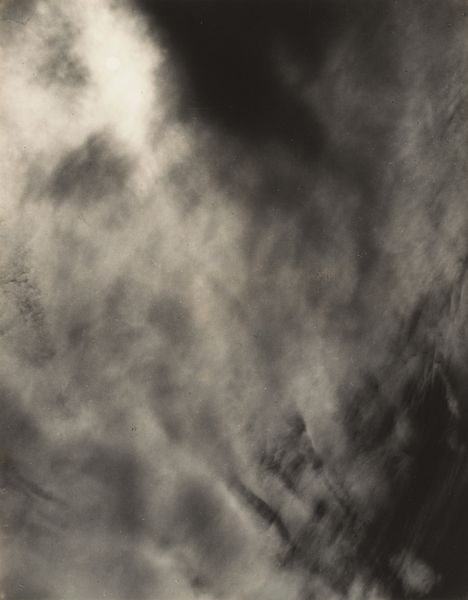
Dimensions: sheet (trimmed to image): 9.2 x 11.6 cm (3 5/8 x 4 9/16 in.) mount: 34.2 x 27.7 cm (13 7/16 x 10 7/8 in.)
Copyright: National Gallery of Art: CC0 1.0
Curator: Here we have Alfred Stieglitz’s photograph, "Songs of the Sky," from 1923. Editor: The first thing I notice is its ethereality, this field of pale shapes feels soft and porous to the touch. It challenges the common perception of photography as simply representational. Curator: Indeed, Stieglitz deliberately titled this series "Equivalents," aiming for these photographs to express inner feelings, thoughts, and states of mind rather than acting as literal depictions. He wanted the forms and tonal relationships in the image to function as metaphors. Editor: He seemed to have chosen a democratic subject! Anyone can observe clouds—he makes art from this widespread labor of observing and imagining shapes, forms. It also makes me think about atmospheric chemistry; what was the air quality like in 1923? Curator: Exactly. His placement within art history emphasizes photography’s capability for abstraction—challenging what photography could accomplish as fine art. The "Equivalents" series challenged the pictorial conventions established early in photography. Editor: I wonder what kind of equipment he was using? The tonality seems limited. Did the materials dictate the feel or the subject? It pushes against this high/low art boundary—the clouds are monumental in their ubiquity but seemingly rendered from accessible processes. Curator: I think both worked together. He purposefully shifted away from manipulating prints and negatives; in many ways, he tried to honor photography’s “straight” approach, though still looking for the medium’s possibilities as modernist expression. Editor: Seeing this makes me think about environmental concerns… how clear are our skies these days? The ready access of these materials shaped both Stieglitz’s processes, which led to our viewing this photograph here, now. Curator: It’s compelling how it captures fleeting moments—offering timeless sentiments tied to the present and its future interpretations. Editor: A chance constellation in time—a perfect coming-together of light and water as shaped by labor and industry.
Comments
No comments
Be the first to comment and join the conversation on the ultimate creative platform.

